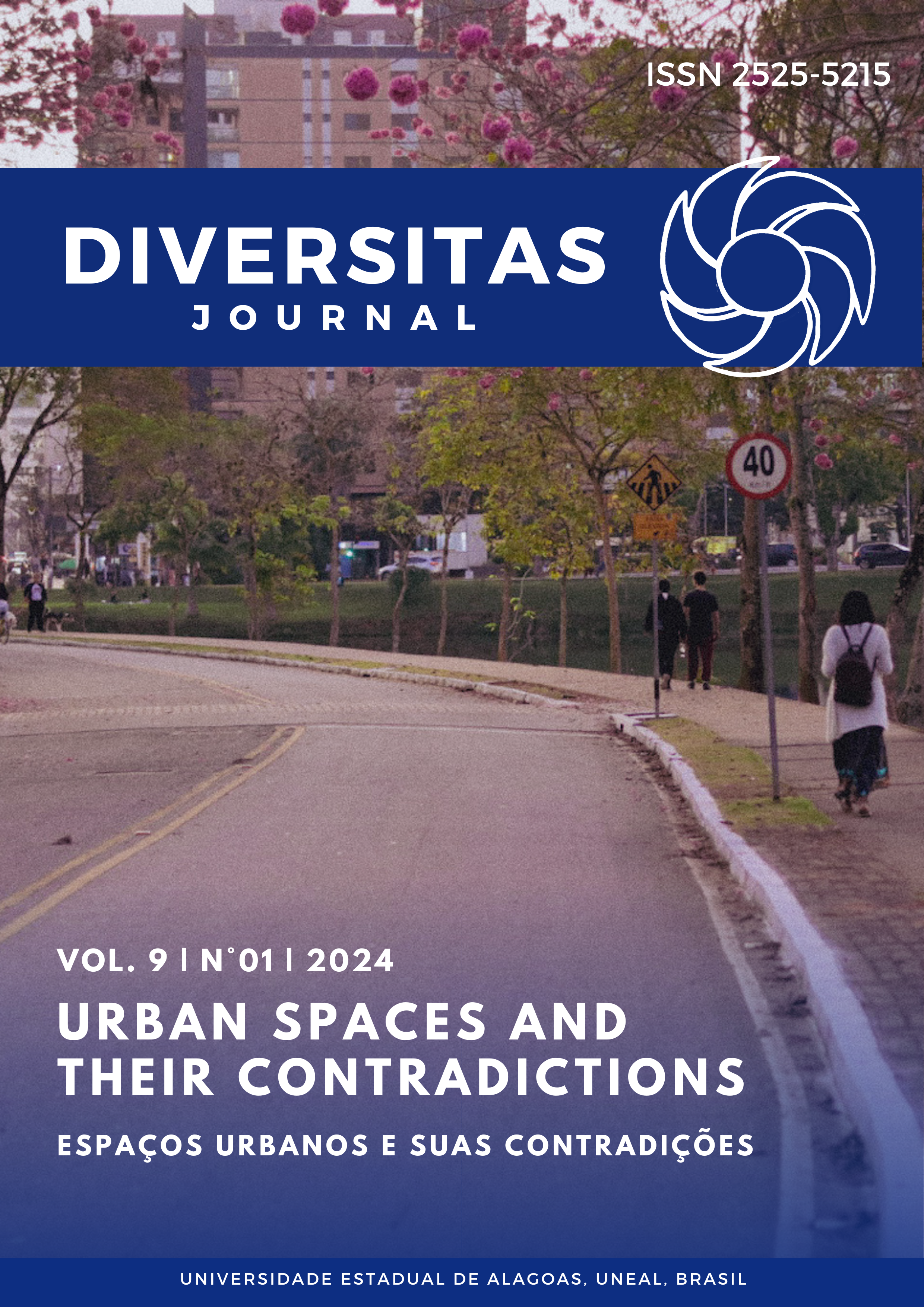Impacts caused by the use oftechnology in dairy farming
a systematic literature review
DOI:
https://doi.org/10.48017/dj.v9i1.2506Keywords:
Technological Innovation, Technology, Dairy FarmingAbstract
Milk is certainly one of the most consumed foods in the world, and that is why it has a strong economic role in several countries around the world. Brazil assumes a prominent role in the world production of this food, not only in natura, but also in by-products, with the milk chain being a great developer of jobs and having considerable importance in the construction construction of the national GDP. Technology is increasingly playing a very important role in several areas, not only in the industry but also in the countryside, as in properties where the main activity developed is dairy farming. The objective of this work was to investigate the impacts of the use of technology in the context of dairy farming. For this, a systematic literature review study was developed, where, to obtain studies addressing the topic, searches were performed in the Scielo and BDTD databases. The researched works aimed to answer the following question: What are the impacts of the use of technology in dairy farming?. The studies found show positive impacts in their results in relation to the use of technologies, on the other hand, small producers find it difficult to implement such technologies, and report that there is a lack of support from public policies. The conclusion is that the technology can indeed work as a tool to help milk producers to have greater production on their properties, but for that they need greater support from public development agencies.
Metrics
References
ARAÚJO, M. D. (2017). Fundamentos de Agronegócios. (2° ed). Atlas.DANTAS, V. V., Santos, M. A. S., Rebello, F. K., Santana, A. C., Júnior, J. B. L. J., Freitas, A. C. R. (2018). Nível tecnológico da pecuária leiteira no estado do Maranhão. Nucleus Animalium,v (10), p. 71-85. Disponível em: < https://dialnet.unirioja.es/servlet/articulo?codigo=6814722>. Acesso em: 20 de dezembro de 2021;
DIAS, D. S. (2000, 4 ago). Motivação e resistência ao uso da tecnologia da informação: um estudo entre gerentes. Revista de Administração Contemporânea [online].V. 4, (n.2), p. 51-66. Disponível em: <https://doi.org/10.1590/S1415-65552000000200004>. Acesso em: 20 de dezembro de 2021
EMBRAPA, Empresa Brasileira de Pesquisa Agropecuária. (2021). Ciência que Transforma. Disponível em: < https://www.embrapa.br/grandes-contribuicoes-para-a-agricultura-brasileira/pecuaria>. Acesso em: 20 de dezembro de 2021;
FAO –FOOD AND AGRICULTURE ORGANIZATION OF THE UNITED NATIONS(2020, jun.). FOOD OUTLOOK. Disponível em: <https://www.fao.org/documents/card/en/c/ca9509en/>. Acesso em: 23 de novembro de 2021.
FLORIÃO, M.M. (2013) Boas práticas em bovinocultura leiteira com ênfase em sanidade preventiva. Niterói: Programa Rio Rural. Disponível em: < http://www.pesagro.rj.gov.br/downloads/riorural/38Boas_Praticas_Bovinocultura_Leiteira.pdf>. Acesso em: 20 de dezembro de 2021;
GODINHO, R. F. (2010) Gestão Empresarial em Sistemas de Produção de Leite na Microrregião de São João Batista do Glória -MG. [Dissertação de Mestrado, Universidade Camilo Castelo Branco]. Disponível em: < http://unicastelo.br/ppgpa/site/pdf/dissertacoes/Dissertacao_Ricardo_Godinho.pdf>Acesso em: 20 de dezembro de 2021;
GOMES, R. C. ; FEIJÓ, G. L. D.; CHIARI,L. (2017). Evolução e qualidade da pecuária brasileira. Empresa Brasileira de pesquisa Agropecuária -Embrapa.Disponível em : <https://www.embrapa.br/documents/10180/21470602/EvolucaoeQualidadePecuaria.pdf/64e8985a-5c7c-b83e-ba2d-168ffaa762ad>. Acesso em: 15 de dezembro, 2021;
JUNG, C. F.; JÚNIOR, A. A. M. (2017, jan/jun). Produção Leiteira no Brasil e Características da Bovinocultura Leiteira no Rio Grande do Sul. Ágora, Santa Cruz do Sul, V.19, n.01, p. 34-47. Disponível em: < https://online.unisc.br/seer/index.php/agora/article/view/8446>. Acesso em: 20 de dezembro de 2021;
MACHADO, J. G. C. F.; NANTES, J. F. D. Adoção da tecnologia da informação em organizações rurais: o caso da pecuária de corte. Gestão & Produção [online]. 2011, v. 18, n. 3 , p. 555-570. Disponível em: <https://www.scielo.br/j/gp/a/cwVwLsPgq8FBq5kvgXZPpLQ/abstract/?lang=pt#>. Acesso em: 20 de dezembro 2021;
MARQUES, R. P.; REIS, P. R.; SÁFADI, T.; REIS,S. A. J. (2002, set/out) Custos e Escala na Pecuária Leiteira: Estudo de Casos em Minas Gerais. Ciência agrotecnologia, V.26, n.5, p.1027-1034. Disponível em: < https://www.researchgate.net/profile/Thelma-Safadi/publication/266277813_CUSTOS_E_ESCALA_NA_PECUARIA_LEITEIRA_ESTUDO_DE_CASOS_EM_MINAS_GERAIS/links/56b086d108ae8e37214f67fc/CUSTOS-E-ESCALA-NA-PECUARIA-LEITEIRA-ESTUDO-DE-CASOS-EM-MINAS-GERAIS.pdf>. Acesso em: 20 de dezembro de 2021;
MILKPOINT. (2014)Futuro da produção de leite: quais os cenários para 2023?. Disponível em:<https://www.milkpoint.com.br/noticias-e-mercado/giro-noticias/futuro-da-producao-de-leite-quais-os-cenarios-para-2023-88007n.aspx>. Acesso em: 28 de novembro de 2021;
RODRIGUES, T. F. (2017). Produção de leite no brasil, a evolução não pode parar. Confederação da Agricultura e Pecuária do Brasil (CNA). Disponível em: < https://www.cnabrasil.org.br/assets/arquivos/artigostecnicos/38-artigo_-_thiago_franscisco_0.82874900%201514912084.pdf>. Acesso em: 14 de dezembro de 2021;
ROUTA, J; SILVEIRA, C.S. (2020, set-out) Análise do desempenho de propriedades leiteiras após ações de consultorias rurais.Revista Livre de Sustentabilidade e Empreendedorismo. V. 5, n. 5, p. 40-67,set-out, 2020. Disponível em: <http://relise.eco.br/index.php/relise/article/view/388/366>. Acesso em: 20, dezembro de 2021;
YAMAGUCHI, L. C. T; MARTINS P. C.; CARVALHO, L. A,; COSTA, C. N. (2016). Perspectivas da Informatização Rural no Brasil.. Disponível em: < https://silo.tips/download/perspectivas-da-informatizaao-rural-no-brasil-resumo#>. Acesso em: 20 de dezembro de 2021.
Downloads
Published
How to Cite
Issue
Section
License
Copyright (c) 2024 Daniel Da Silva Nascimento, Lavinia Ventura da Silva, João Macedo Macena, Horasa Maria Lima da Silva, Luciano Pires Andrade

This work is licensed under a Creative Commons Attribution 4.0 International License.
The Diversitas Journal expresses that the articles are the sole responsibility of the Authors, who are familiar with Brazilian and international legislation.
Articles are peer-reviewed and care should be taken to warn of the possible incidence of plagiarism. However, plagiarism is an indisputable action by the authors.
The violation of copyright is a crime, provided for in article 184 of the Brazilian Penal Code: “Art. 184 Violating copyright and related rights: Penalty - detention, from 3 (three) months to 1 (one) year, or fine. § 1 If the violation consists of total or partial reproduction, for the purpose of direct or indirect profit, by any means or process, of intellectual work, interpretation, performance or phonogram, without the express authorization of the author, the performer, the producer , as the case may be, or whoever represents them: Penalty - imprisonment, from 2 (two) to 4 (four) years, and a fine. ”


















